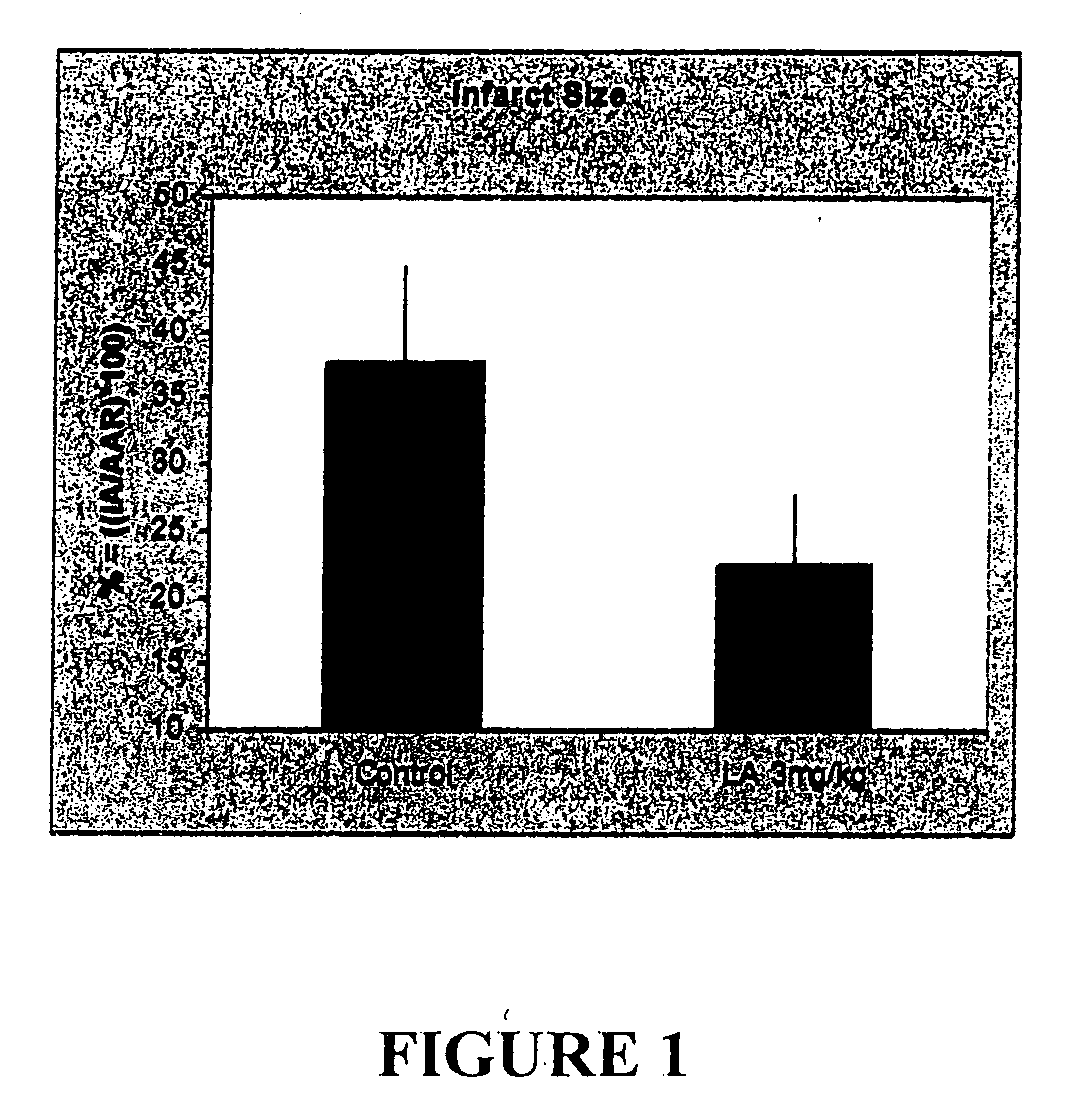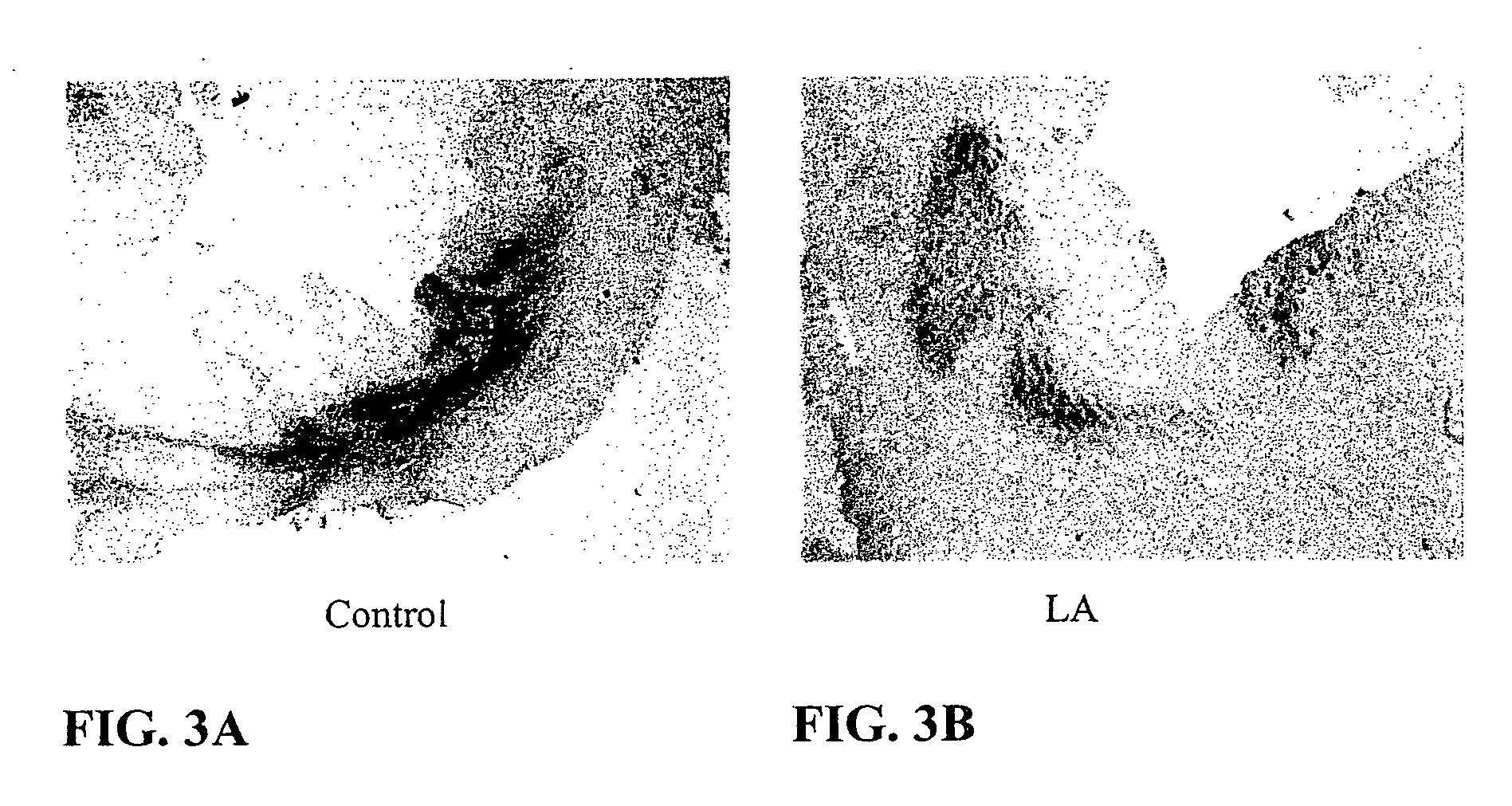Method of treating ischemia-reperfusion injury
- Summary
- Abstract
- Description
- Claims
- Application Information
AI Technical Summary
Benefits of technology
Problems solved by technology
Method used
Image
Examples
Embodiment Construction
[0018] Phagocytic cells, particularly macrophages and monocytes, are involved in the cause and / or pathology of ischemia-reperfusion injury (IRI). Once an ischemia occurs, macrophages / monocytes are recruited to the damaged tissue and secrete cytokines and other mediators that promote tissue damage. This results in tissue injury beyond that caused by ischemia alone which increases tissue necrosis thus expanding the zone of infarct, i.e., permanent tissue damage. Although a complete and chronic incapacitation and / or ablation of phagocytic cells is not desirable, such a decrease or inhibition in phagocytic cell activity and / or presence is desirable in the short term during or after an IRI event to stabilize the patient and / or reduce the damage caused by the IRI event.
[0019] IRI was first described in the myocardium for the damages seen by myocardial infarction. However, it is now evident that this condition occurs in a wide variety of organs and tissues, including but not limited to, t...
PUM
| Property | Measurement | Unit |
|---|---|---|
| Size | aaaaa | aaaaa |
| Size | aaaaa | aaaaa |
| Size | aaaaa | aaaaa |
Abstract
Description
Claims
Application Information
 Login to View More
Login to View More - R&D
- Intellectual Property
- Life Sciences
- Materials
- Tech Scout
- Unparalleled Data Quality
- Higher Quality Content
- 60% Fewer Hallucinations
Browse by: Latest US Patents, China's latest patents, Technical Efficacy Thesaurus, Application Domain, Technology Topic, Popular Technical Reports.
© 2025 PatSnap. All rights reserved.Legal|Privacy policy|Modern Slavery Act Transparency Statement|Sitemap|About US| Contact US: help@patsnap.com



